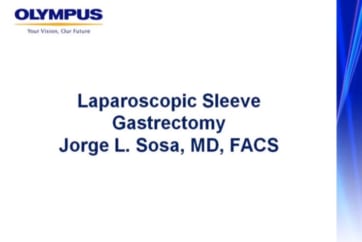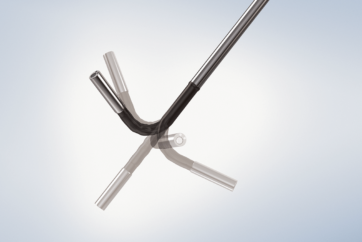Feel the perspective (Selecting a suitable laparoscope)
In laparoscopic surgery, it is important to obtain the perspective accurately.
Like perspective representation in pictures, a feeling of near and far distance can be obtained on the screen when the direction of view is changed.
In operative field A showing a front view, objects seem to be simply aligned side by side.
In operative field B showing a higher viewpoint, their relative position can be obtained.
In operative field C showing an overhead view, distances between objects can be distinctively obtained. Furthermore, some objects that were hidden in the other views may be now observed.
Figure 1 By changing the viewpoint, obtain a new field of view
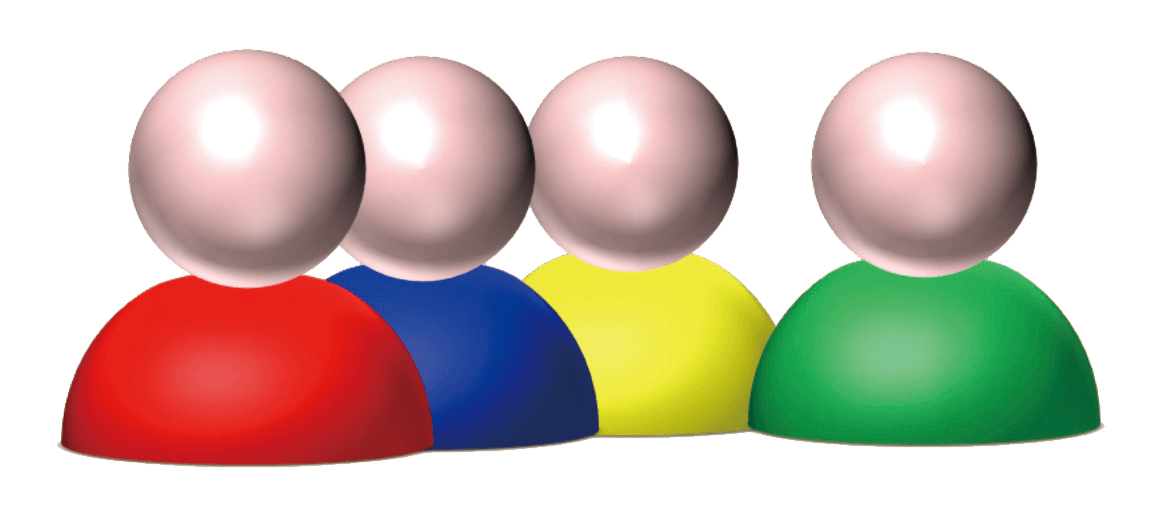

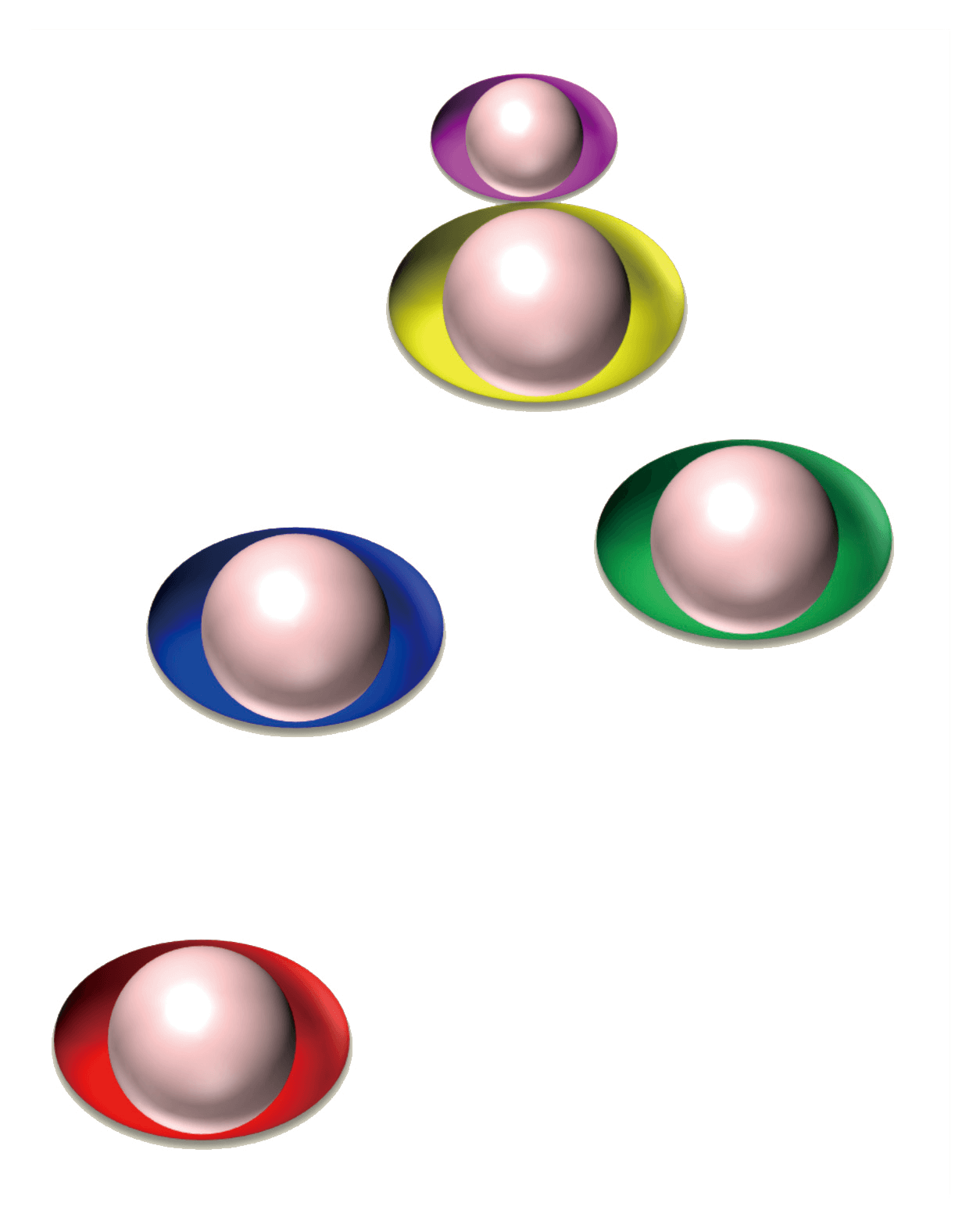
i Comparing the direction of view
Figure 2 View with forward view laparoscope
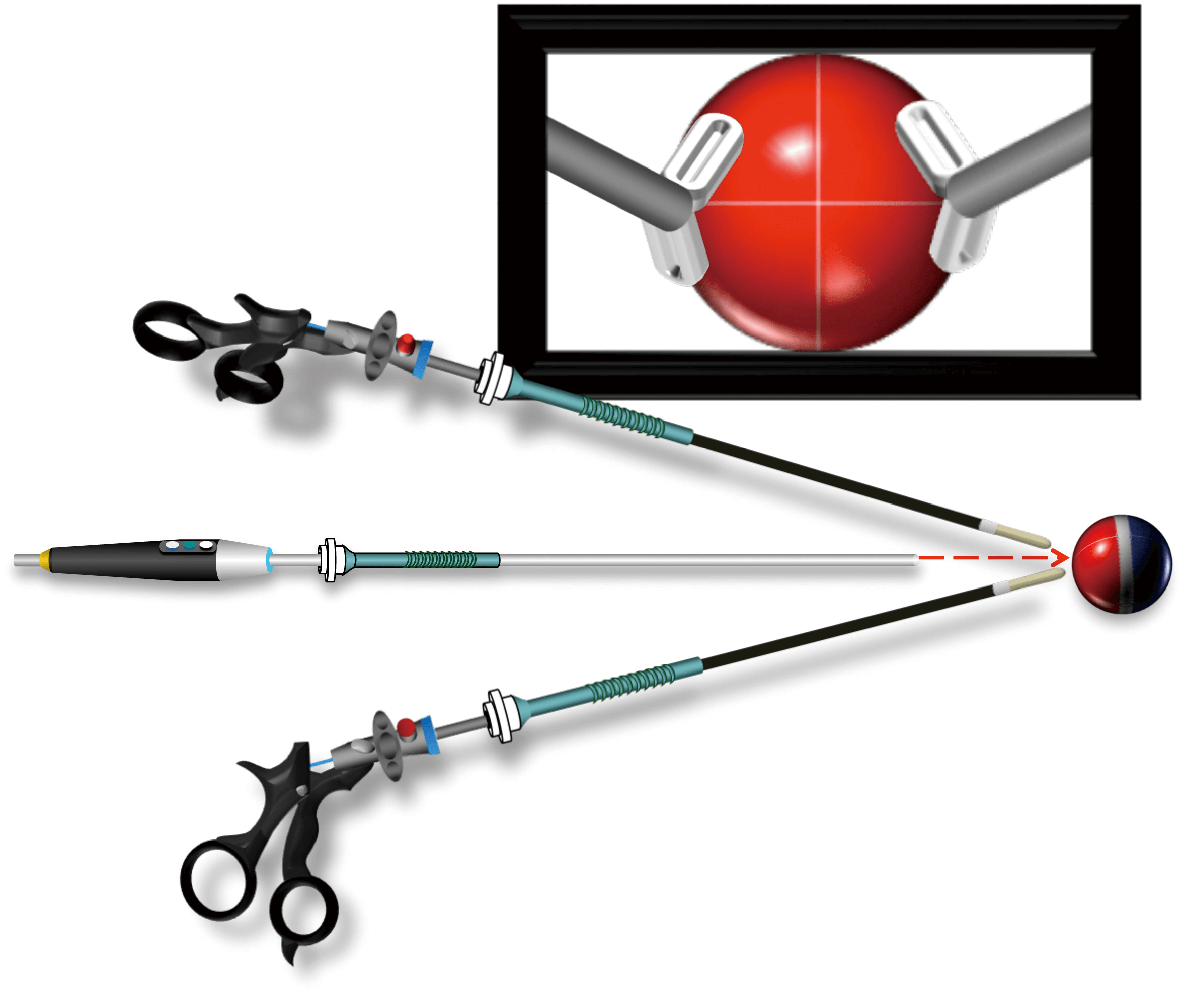
In the front view of a forward view laparoscope, the view axis overlaps the hand instruments operation axis in the operative field. This is what is called an “in-line view,” where a sense of near and far distance is difficult to obtain.
Figure 3 View with oblique view laparoscope
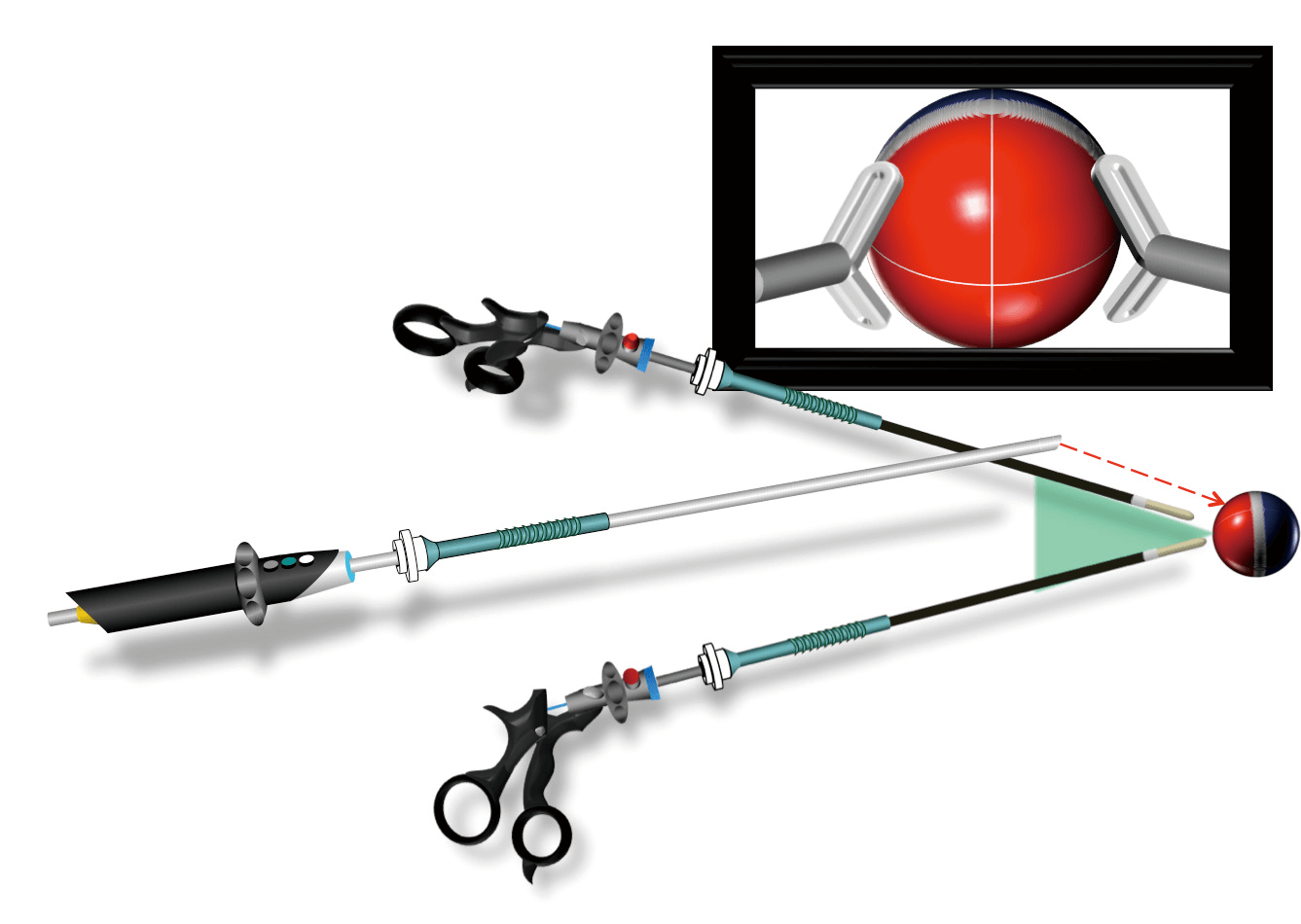
By using oblique view laparoscopes to provide a higher viewpoint in which objects are obliquely looked down on from above, a feeling of near and far distance is easily obtained as compared with forward view laparoscopes.
Figure 4 View with the ENDOEYE FLEX
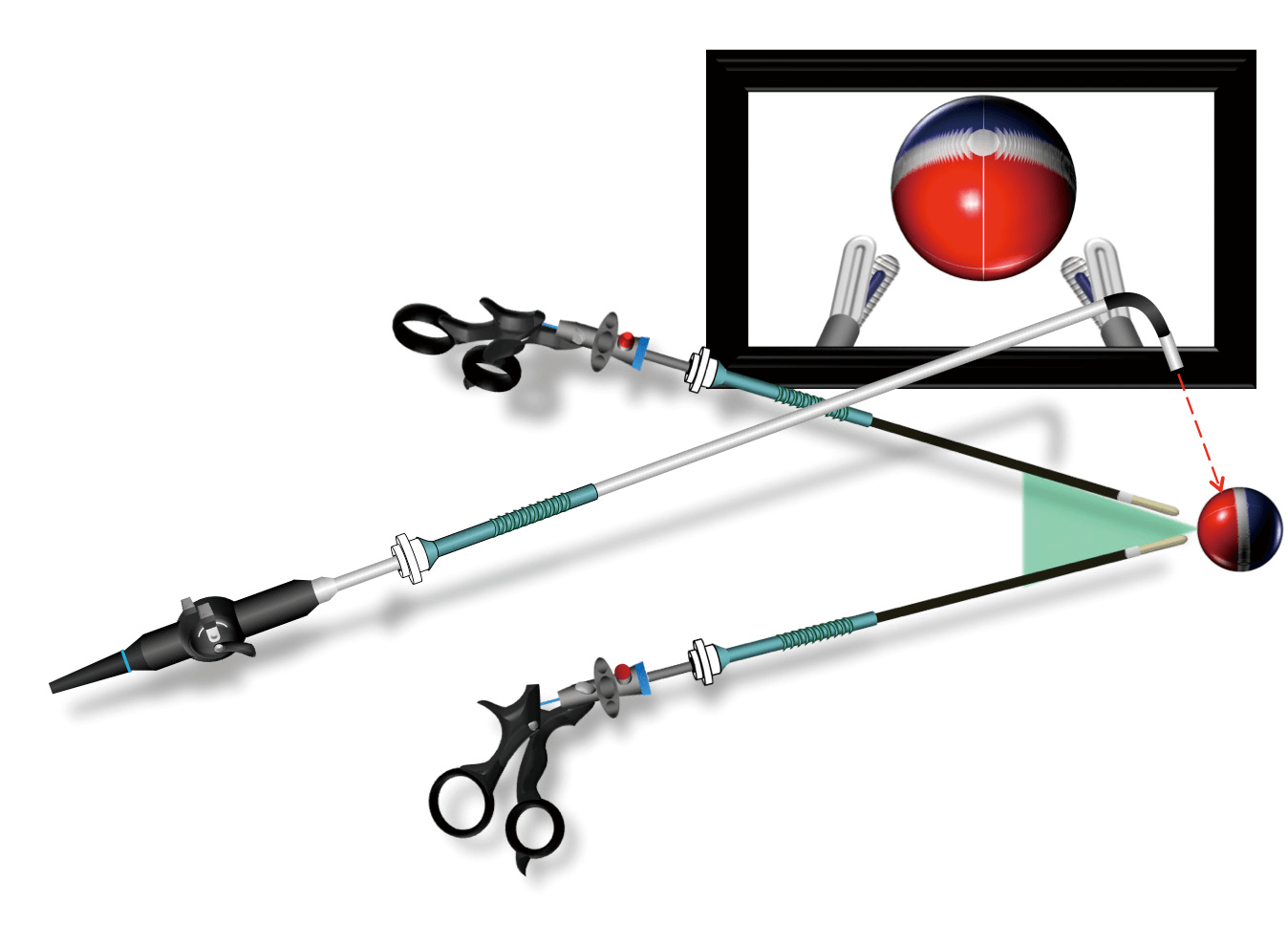
By using the ENDOEYE FLEX to provide an overhead view in which objects are looked down on from directly above, a sense of distance is obtained. Through repeated shifting of the direction of view, more detailed positional relations are obtained. The ENDOEYE FLEX allows angulation to be changed as desired, and the direction of view to be shifted with no need for replacing laparoscopes. Thus, the ENDOEYE FLEX is efficient in terms of direction of view.
ii Comparing the capabilities and limitations
Figure 5 View with forward view laparoscope
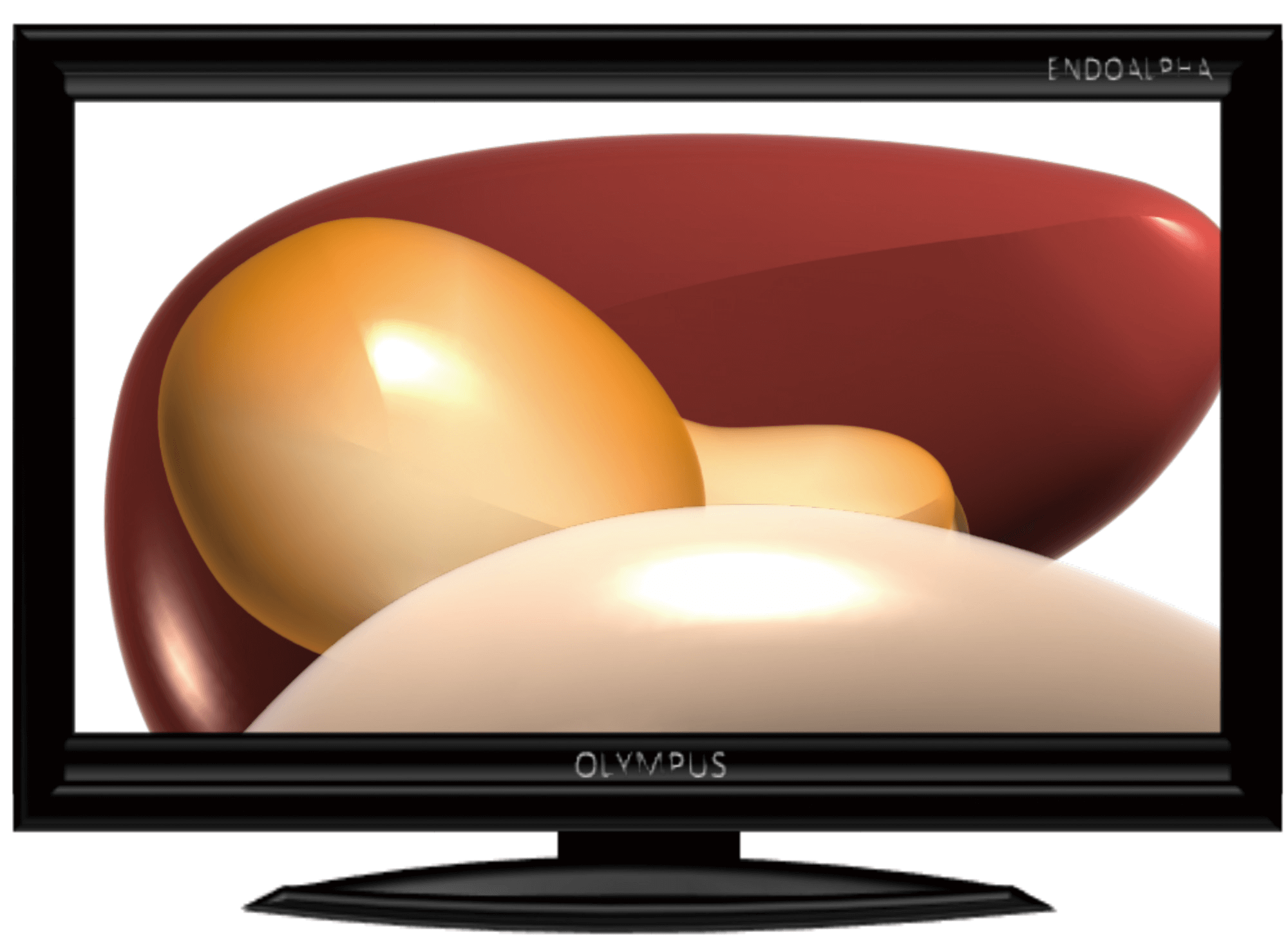
The forward view rigid laparoscope can be easily and intuitively operated, enabling the laparoscope operator to quickly meet the surgeon’s needs. With the forward view rigid laparoscope, however, organs in front can block observation of the target organ in the field of view. Thus the laparoscope is useful for surgery on organs that are linearly visible from the scope port. The fact is, however, using forward view laparoscopes alone in laparoscopic surgery, where access is limited, is often ineffective.
Figure 6 View with oblique view laparoscope
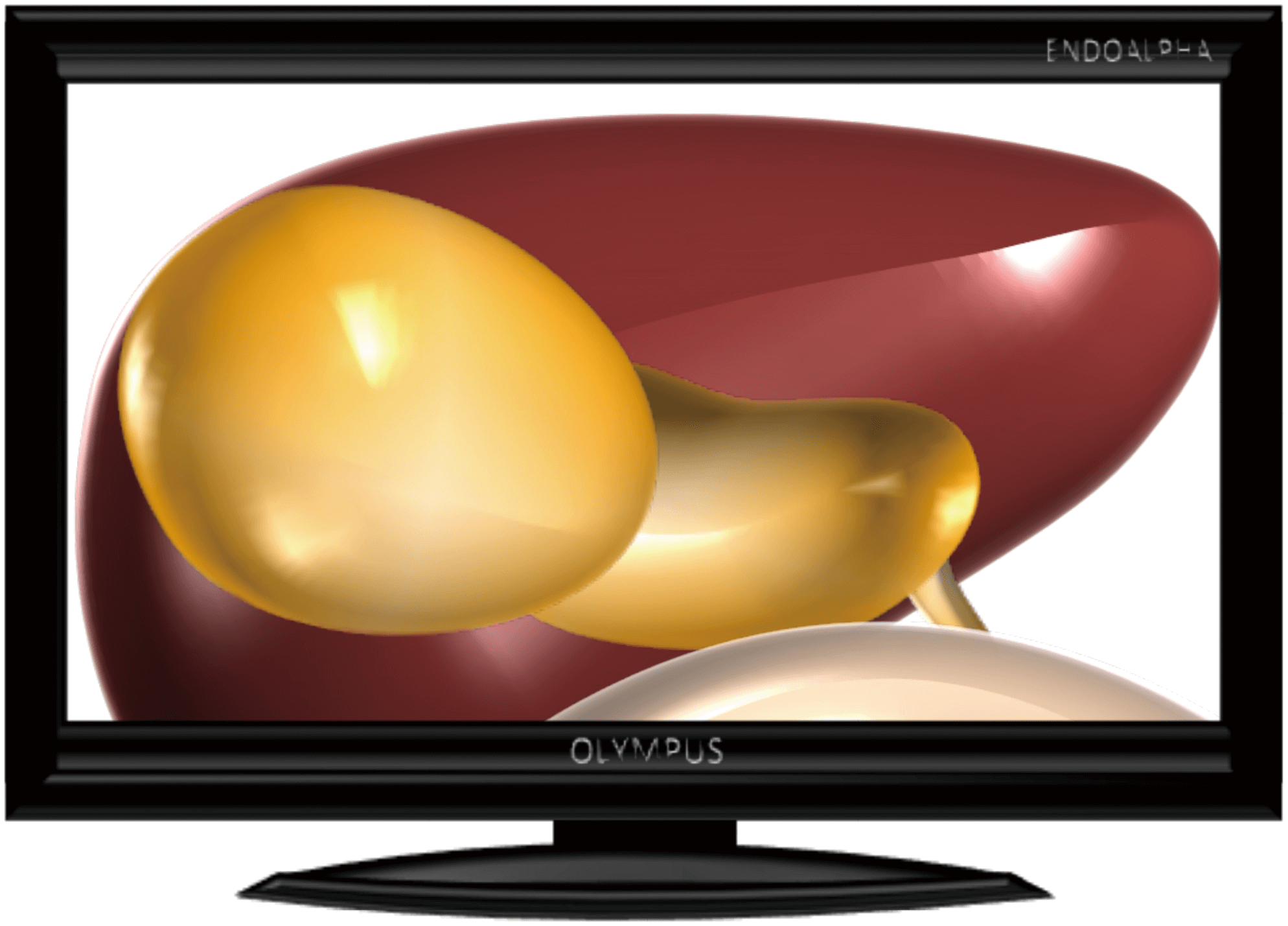
In contrast, the oblique view rigid laparoscope enables observation around the blocking organs. An optimum operative field can be secured by shifting the direction of view through operation of the dial if the vertical direction of the laparoscope is kept under control. However, this difference from the forward view rigid laparoscope, which allows for intuitive operation, can frustrate an untrained laparoscope operator who is unaware of the slanted screen due to specific shifting of the operative field in the oblique view rigid laparoscope.
Figure 7 View with the ENDOEYE FLEX
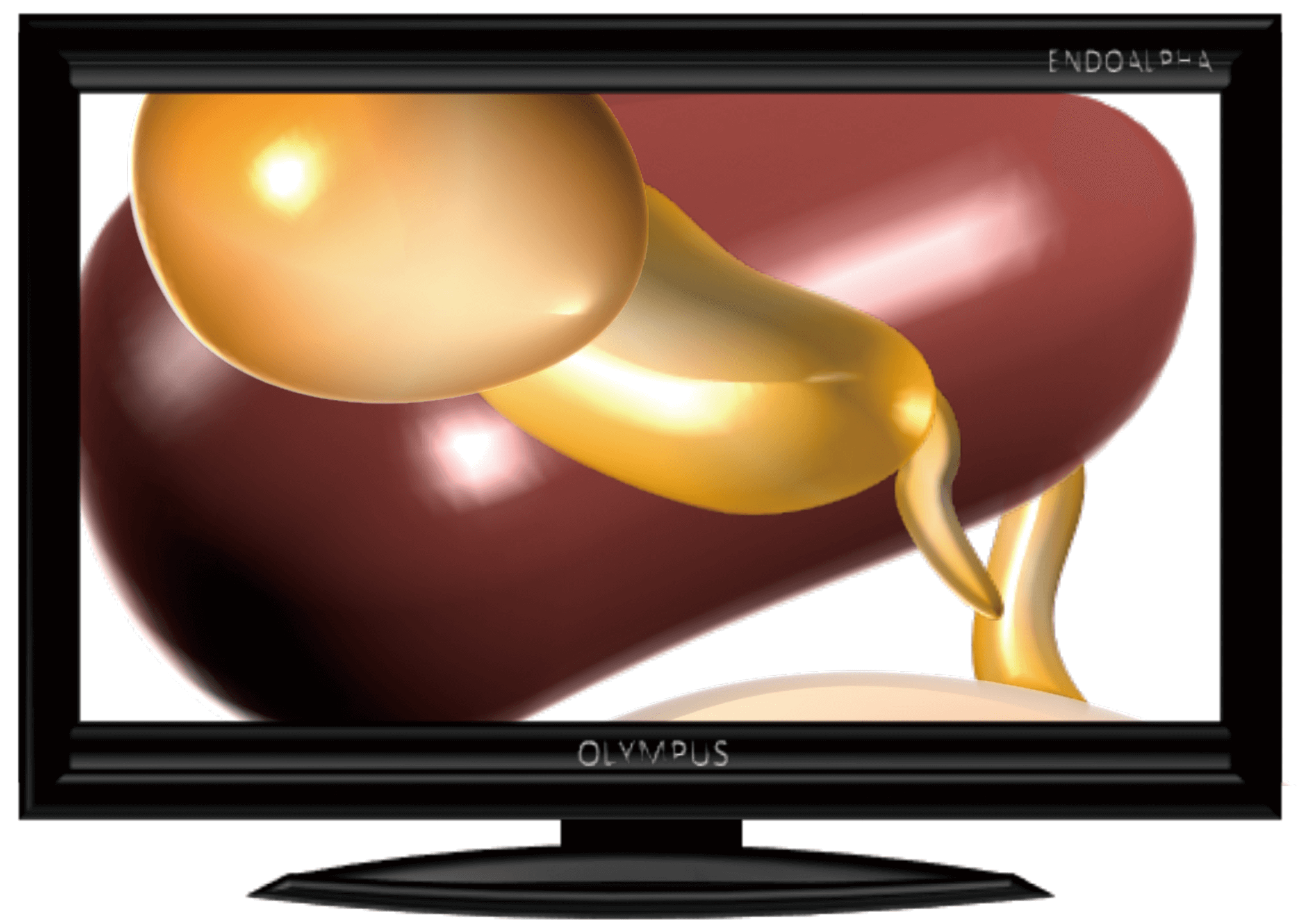
The oblique view rigid laparoscope is limited in its capability of peeking over objects because of its preset angle of oblique view, while the ENDOEYE FLEX enables more detailed observation of the target organ on the far side, because its angulation is adjustable. By changing the direction of the bending section so as to provide the intended direction of view, while the direction of the laparoscope remains fixed, the ENDOEYE FLEX can function the same way as the forward view laparoscope in obtaining an image of the operative field.
- Content Type

